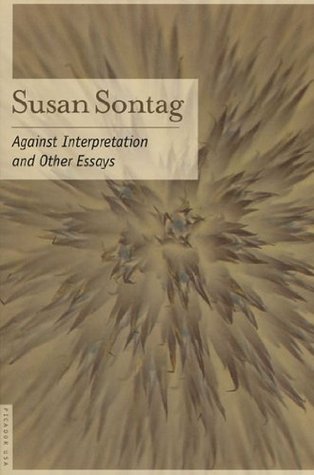More on this book
Community
Kindle Notes & Highlights
by
Susan Sontag
Read between
September 10 - September 15, 2022
None of us can ever retrieve that innocence before all theory when art knew no need to justify itself, when one did not ask of a work of art what it said because one knew (or thought one knew) what it did. From now to the end of consciousness, we are stuck with the task of defending art.
Once the question that haunts post-mythic consciousness—that of the seemliness of religious symbols—had been asked, the ancient texts were, in their pristine form, no longer acceptable. Then interpretation was summoned, to reconcile the ancient texts to “modern” demands.
Interpretation thus presupposes a discrepancy between the clear meaning of the text and the demands of (later) readers. It seeks to resolve that discrepancy. The situation is that for some reason a text has become unacceptable; yet it cannot be discarded. Interpretation is a radical strategy for conserving an old text, which is thought too precious to repudiate, by revamping it.
In some cultural contexts, interpretation is a liberating act. It is a means of revising, of transvaluing, of escaping the dead past.
In a culture whose already classical dilemma is the hypertrophy of the intellect at the expense of energy and sensual capability, interpretation is the revenge of the intellect upon art.
Interpretation makes art manageable, conformable.
Interpretation, based on the highly dubious theory that a work of art is composed of items of content, violates art. It makes art into an article for use, for arrangement into a mental scheme of categories.
Art is connected with morality, I should argue. One way that it is so connected is that art may yield moral pleasure; but the moral pleasure peculiar to art is not the pleasure of approving of acts or disapproving of them. The moral pleasure in art, as well as the moral service that art performs, consists in the intelligent gratification of consciousness.
The greatest artists attain a sublime neutrality.


